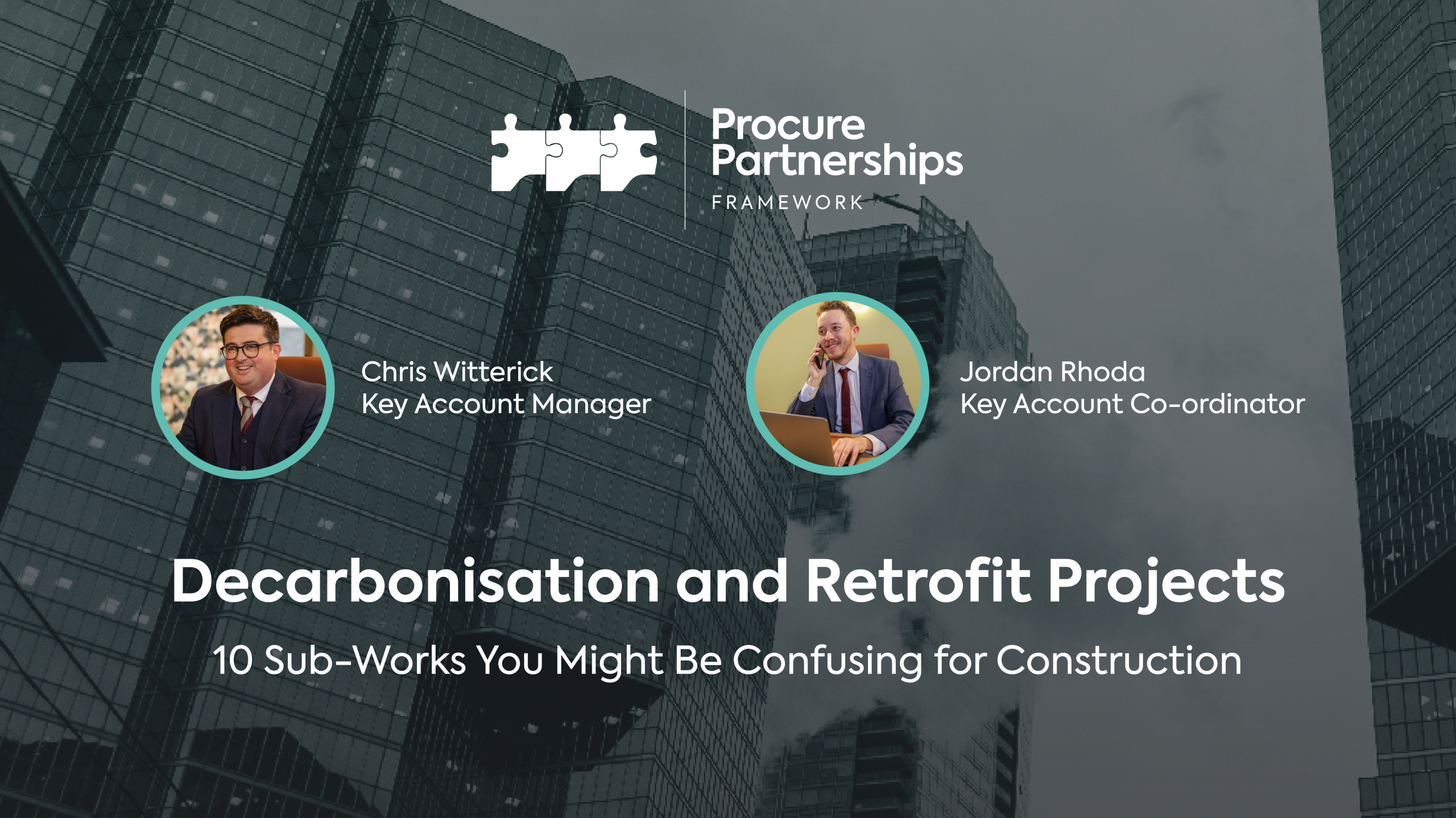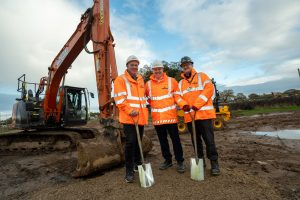Should your project fall under construction or be categorised as Decarbonisation & Retrofit? We’ve noticed from some of our discussions that due to an overlap in goals and methodologies, there’s some confusion around lot selection and whether your projects should be in Construction or part of the Decarbonisation & Retrofit lot.
In this blog, to clear up any misconceptions, we’re highlighting 10 sub-works that fall under the Decarbonisation & Retrofit category, supporting the public sector’s goals of achieving Net Zero by 2050 and reducing carbon emissions by 78% by 2025.
What is Decarbonisation & Retrofit?
Firstly, let’s outline what Decarbonisation & Retrofit is. Decarbonisation, in the UK public sector, aims to reduce or eliminate carbon dioxide emissions from public services and operations as part of the UK’s strategy to achieve Net Zero emissions by 2050. This includes transitioning to renewable energy, improving energy efficiency in public buildings, adopting electric vehicles etc.
Retrofitting involves upgrading existing buildings and infrastructure to enhance energy efficiency and reduce carbon intensity. This can involve better insulation, efficient heating and cooling systems and smart energy management to name a few. Both decarbonisation and retrofitting efforts aim to lower energy consumption and carbon emissions.
Why is there confusion between Construction and Decarbonisation & Retrofit?
Confusion between Construction and Decarbonisation & Retrofit projects are arising due to the overlap in their goals and activities. One major area of overlap is the improvement of energy-efficient buildings.
Both Decarbonisation & Retrofit projects focus on upgrading insulation, windows and heating and cooling systems to reduce energy consumption and carbon emissions.
These upgrades are also common in new construction projects, where buildings are designed with energy efficiency in mind. As a result, it can be challenging to distinguish whether these efforts are part of a new construction initiative, or part of Decarbonisation & Retrofit.
Additionally, the installation of renewable energy systems such as solar panels and energy management systems is another point of confusion. These installations are components of both new construction projects and retrofit projects that aim to reduce carbon footprints.
Similarly, the integration of building automation and smart systems for energy management is prevalent in both. These systems are designed to optimise energy use and improve efficiency, whether they are implemented in new buildings or as part of retrofitting existing structures.
This overlap in activities and objectives between Construction and Decarbonisation & Retrofitting contributes to the confusion in distinguishing between these types of projects.
10 Sub Works that are categorised as Decarbonisation and Retrofit Projects
Here are the 10 sub-works you should look out for when distinguishing whether your project falls under Construction or Decarbonisation & Retrofit. These key areas will help you determine the correct lot for your project.
Building Retrofits
1. Insulation Improvements:
Adding or improving insulation in walls, roofs, and floors to reduce heat loss and energy consumption.
2. Window Upgrades:
Replacing old, inefficient windows with double or triple-glazed units to improve thermal efficiency
3. Lighting Overhauls:
Switching to LED lighting from older, less energy-efficient lighting technologies.
Renewable Energy Installations
4. Solar Panels:
Implementing photovoltaic systems on public buildings to generate clean electricity.
Transportation Projects
5. Electric Vehicle (EV) Fleets:
Transitioning public service and transport fleets to electric vehicles.
6. EV Charging Infrastructure:
Building the necessary infrastructure to support electric vehicles, including charging stations.
Smart Energy Systems
7. Energy Management Systems:
Installing advanced systems for monitoring and managing energy use more efficiently across public sector properties.
8. Smart Grid Technologies:
Implementing smart grid solutions to better manage electricity distribution and consumption.
Heat Decarbonisation
9. Heat Pumps:
Installing air source, ground source and water source heat pumps
10. Point-of-use hot water heaters:
Use energy more efficiently and only when needed.
How Procure Partnerships can help
At Procure Partnerships Framework, we give you assurance with our tried and tested procurement methods. Our clients benefit from our framework’s flexibility, with options for Direct Award, Single or Two-Stage procurement and up to eight call-off contracts.
With specialist expertise in Procurement and Decarbonisation & Retrofit for the public sector, our framework is a reliable nationally focused service, supporting our clients throughout your project’s life cycle.
Contractors are essential to our journey towards sustainability. Their expertise and dedication turn client visions into reality and brings us closer to our Net Zero aspirations. Through the framework’s Decarbonisation and Retrofit lots, our Contractor Partners are equipped to deliver all works funded by the Public Sector Decarbonisation Scheme.
If you are based in the South East, you can check out which contractors are on our Decarbonisation and Retrofit lot by visiting our website here, or if you are based in London, you can visit our website here.
Want to learn more or need clarity on the lot selection of your projects?
Contact Chris today on 0752 332 5289 or via email chris@procurepartnerships.co.uk or contact Jordan on 07507 295782 or via email jordan@procurepartnerships.co.uk.
Let’s discuss your procurement needs and how we can support your Decarbonisation & Retrofitting projects.



